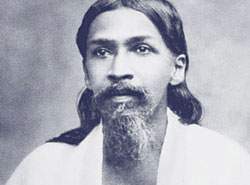The English of Savitri Volume 7

The English of Savitri
volume 7
Like the previous books in this series, this one too is based on transcripts of classes held by the author at Savitri Bhavan, in this case from August 2011 to March 2012. The transcripts have been carefully revised and edited for conciseness and clarity, while aiming to preserve the informal atmosphere of the course. This Seventh Volume covers Cantos Five and Six of Book Two of Sri Aurobindo’s epic, Savitri – A Legend and a Symbol. Each sentence of these cantos is examined closely and explanations are given about vocabulary, sentence-structure and imagery. The aim is to assist understanding of the poem which the Mother has characterised as ‘the supreme revelation of Sri Aurobindo’s vision’.
Author: Shraddhavan
Print Length: 312 pages
Publisher: Savitri Bhavan
Book format: PDF, ePub, Kindle
Language: English
Book Download
Table of Contents
Introduction
Canto Five The Godheads of the Little Life
- Section 1 : lines 1-115
- Section 2 : lines 116-321
- Section 3 : lines 322-457
- Section 4 : lines 458-601
- Section 5 : lines 602-751
- Section 6 : lines 752-773
Canto Six The Kingdoms and Godheads of the Greater Life
- Section 1 : lines 1-79
- Section 2 : lines 80-365
- Section 3 : lines 366-536
- Section 4 : lines 537-671
- Section 5 : lines 672-803
- Section 6 : lines 804-1017
Some References to the Sphinx by the Mother and Sri Aurobindo
Book Sample
The English of Savitri
volume 7
Introduction
Book Two of Sri Aurobindo’s epic Savitri – A Legend and a Symbol is entitled The Book of the Traveller of the Worlds. This part of Sri Aurobindo’s monumental poem tells the story of rishi-king Aswapati, who, after gaining great spiritual knowledge, is inspired by the understanding that the true goal of humanity is to realise a truly divine life in this material world. He embarks on a search to discover the power which would have the capacity to bring about this great change. His quest leads him through all the planes of universal existence from the deepest darkest levels to the highest and most heavenly ones, and brings him finally to the feet of the Supreme Divine Mother, who grants him a boon which will enable the fulfilment of his Vision.
Sri Aurobindo’s close disciple and scribe for the epic, Dr. Nirodbaran, has told us that this part of the poem can be read as the autobiography of Sri Aurobindo himself, as it is based on his own experiences in the course and fulfilment of his inner explorations.
King Aswapati’s exploration of the planes of universal existence is described in the fifteen cantos of Book Two of Sri Aurobindo’s epic, which is entitled The Book of the Traveller of the Worlds.
We can gain some idea of Sri Aurobindo’s plan and intention for what later became Book Two, from some notes which he wrote to his disciple Amal Kiran (K.D. Sethna) in 1937 and 1938. There he mentions:
There is a long passage describing Aswapati’s progress through the subtle physical, vital and mental worlds towards the Overmind. (11.11.1938)
and:
It is the realisation of Godhead with which it will end. (19.3.1937)
It is known that after these dates, Sri Aurobindo’s composition of Savitri involved a great deal of revision and enlargement in a period spread over several years, and especially the part dealing with the spiritual journey of King Aswapati underwent a huge expansion: from 471 lines in January 1937 to over 7,000 in the final version, eventually leading to the fifteen cantos of Book Two as they now stand. Sri Aurobindo himself has also told us that Aswapati makes this great ascent ‘as a typical representative of the [human] race to win the possibility of discovery and possession of all the planes of consciousness, and this is described in the Second Book.’
Detailed explanations of the first four cantos of Book Two, entitled respectively The World-Stair, The Kingdom of Subtle Matter, The Glory and the Fall of Life and The Kingdoms of the Little Life, have been collected and published in Volume 5 of the English of Savitri series. The first two of these cantos, The World Stair and The Kingdom of Subtle Matter, deal with the subtle-physical planes, and then the following seven cantos, from Canto Three, The Glory and the Fall of Life, to Canto Nine, The Paradise of the Life Gods, deal with various levels of the realms of Life.
This series is now being continued with Volume 7, which presents explanations of the Fifth and Sixth Cantos, namely The Godheads of the Little Life and The Kingdoms and Godheads of the Greater Life, while Volume 8, covering Cantos Seven, Eight and Nine, will close the description of the Life Worlds, and Volume 9 will lead us into the Mind realms with Canto Ten, The Kingdoms and Godheads of the Little Mind, and Canto Eleven, The Kingdoms and Godheads of the Greater Mind.
Four further cantos dealing with higher realms of the Mind and beyond [Twelve: The Heavens of the Ideal, Thirteen: In the Self of Mind, Fourteen: The World-Soul and Fifteen: The Kingdoms of the Greater Knowledge] bring us to the climactic close of Book Two, but not to the end of Aswapati’s quest, for that continues through the four cantos of Book Three, The Book of the Divine Mother, with which Sri Aurobindo ends the First Part of his epic.
Perhaps some apologetic explanation is due to readers of this series of books for the numbering of the volumes, which does not fully correspond to the order of the Books and Cantos of Sri Aurobindo’s epic. This discrepancy has come about because the author of the series had at first no idea of giving explanations of the language of Sri Aurobindo’s epic that would cover the entire poem.





Leave a Reply
Want to join the discussion?Feel free to contribute!